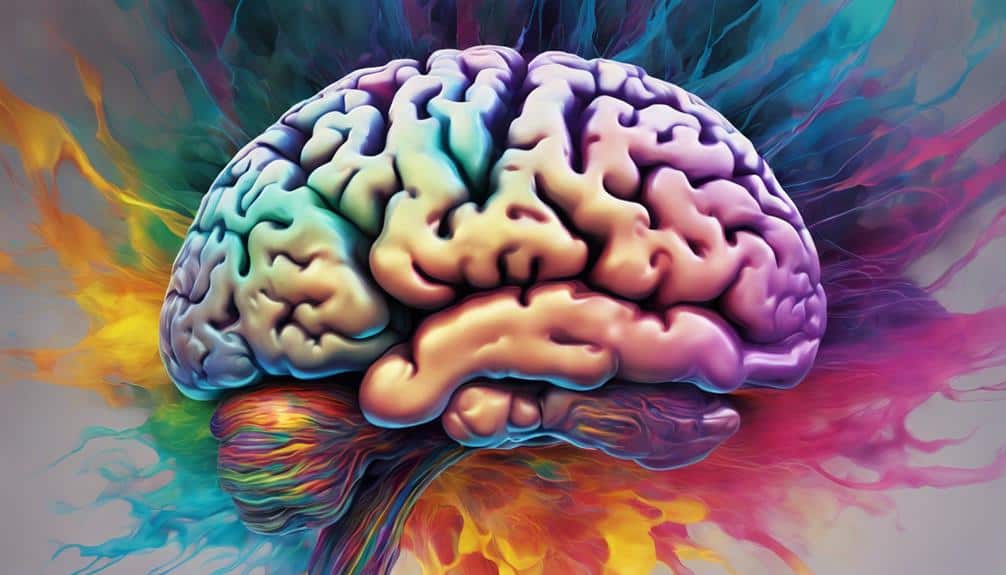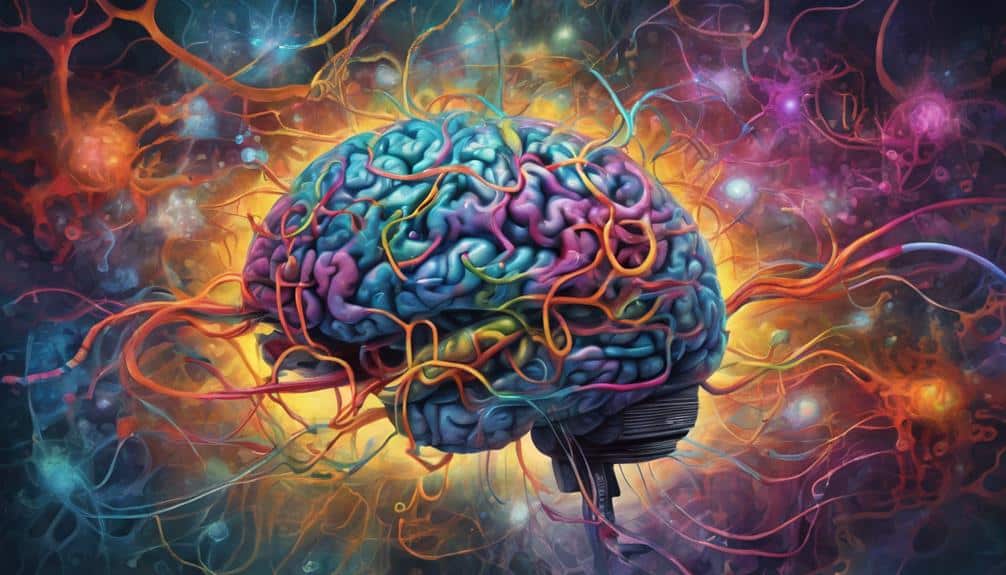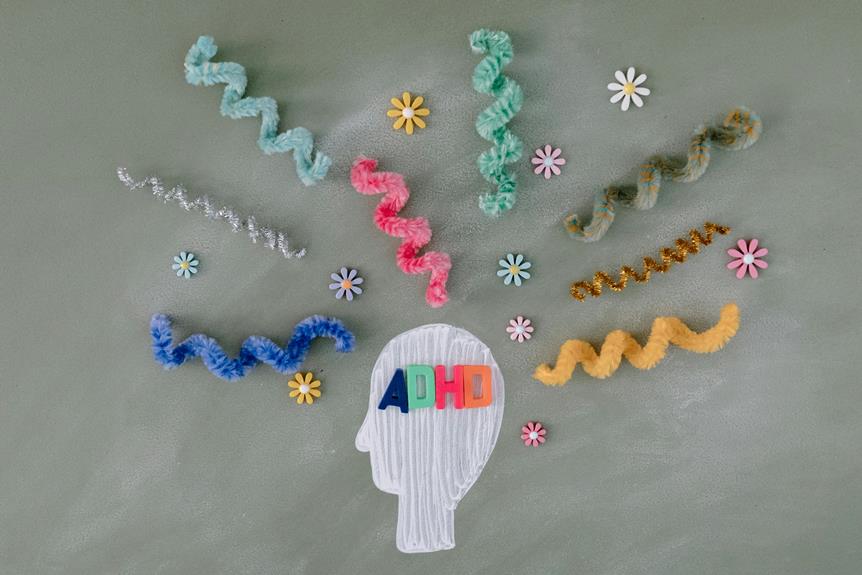Stochastic Resonance Adhd
By chance, have you ever considered how white noise could potentially aid individuals with ADHD in improving their cognitive abilities?
The concept of Stochastic Resonance ADHD offers a fascinating perspective on how external noise might play a beneficial role in enhancing focus and concentration for those with ADHD.
As we explore this intriguing phenomenon, it becomes evident that there is much more to uncover about the practical applications and implications of Stochastic Resonance in the domain of ADHD management.
Key Takeaways
- Noise enhances signal detection in ADHD brains.
- Stochastic resonance therapy improves focus and attention.
- Controlled noise levels optimize cognitive functioning.
- Non-pharmacological approach for enhancing ADHD cognitive tasks.
Understanding Stochastic Resonance in ADHD

Understanding Stochastic Resonance in ADHD involves grasping how noise amplifies signal detection in the brains of individuals with this condition. In ADHD, neural activity is often characterized by irregularities in dopamine levels, impacting attention and focus. Stochastic resonance, a concept rooted in the ideal stimulation theory, suggests that the addition of white noise can enhance cognitive performance by improving the signal-to-noise ratio. This phenomenon is particularly relevant in ADHD where individuals may struggle with maintaining attention.
White noise, a form of random noise that contains equal power across different frequencies, plays an important role in modulating neural responses in individuals with ADHD. By introducing white noise, stochastic resonance theory proposes that beneficial effects on cognitive processes can be achieved. The perfect level of noise required for each individual varies based on their unique neural functioning and information processing capabilities.
Ultimately, understanding how stochastic resonance and white noise influence cognitive performance in ADHD sheds light on potential therapeutic interventions for enhancing attention and focus in affected individuals.
Benefits of Stochastic Resonance Therapy

Stochastic resonance therapy has been shown to enhance focus and attention while boosting cognitive abilities by optimizing brain function through noise stimulation. Research indicates that this therapy may provide a non-pharmacological approach for individuals with ADHD to improve cognitive tasks.
The theory behind stochastic resonance suggests that adding noise can enhance brain processing, potentially offering benefits for those with ADHD symptoms.
Improved Focus and Attention
Enhancing focus and attention through stochastic resonance therapy involves augmenting signal detection by introducing controlled levels of noise. White noise exposure, particularly in children with ADHD, has shown positive effects on cognitive performance.
The best stimulation theory suggests that external noise can benefit individuals with ADHD by improving their memory and attention. Stochastic resonance theory explains how the strategic use of noise can optimize brain function, enhancing cognitive abilities in those with ADHD.
Research supports the notion that stochastic resonance therapy can aid in tasks requiring focus and attention in individuals with ADHD. By leveraging the principles of stochastic resonance, individuals can experience improved cognitive functions and better manage symptoms associated with ADHD.
Enhanced Cognitive Abilities
Building upon the positive effects of white noise exposure on cognitive performance in individuals with ADHD, stochastic resonance therapy further maximizes cognitive abilities by enhancing signal detection through controlled noise levels.
This therapy aids in stimulating concentration sensors, improving task performance, and maintaining attention in individuals with ADHD. The prime stimulation theory suggests that adjusting stimulation levels can enhance brain function, particularly in those with attention deficit hyperactivity disorder.
Implementing Stochastic Resonance Techniques

Utilizing controlled levels of background noise is a key aspect of implementing stochastic resonance techniques to optimize cognitive performance in individuals with ADHD. Stochastic resonance involves introducing specific levels of noise, such as white noise, to modulate brain arousal levels and enhance cognitive functioning. This technique aims to improve signal detection, reduce off-task behaviors, and ultimately boost cognitive abilities in individuals with ADHD.
By finding the right balance of noise, stochastic resonance can help individuals with ADHD focus better, sustain attention, and improve overall task performance. Implementing stochastic resonance techniques offers a promising non-pharmacological approach to enhancing cognitive functioning in individuals with ADHD.
- Introducing white noise at specific levels can optimize brain arousal levels for individuals with ADHD.
- Stochastic resonance techniques aim to enhance signal detection and reduce off-task behaviors in individuals with ADHD.
- Balancing background noise levels is essential to effectively implement stochastic resonance and improve cognitive performance.
Research and Studies on Stochastic Resonance

Conducting extensive research and studies on stochastic resonance has provided valuable insights into its potential applications for optimizing cognitive performance in individuals with ADHD. Stochastic resonance enhances signal detection by introducing external noise, such as white noise, to improve cognitive function. This method aligns with the best stimulation theory, which posits that individuals with ADHD may require different levels of stimulation for best performance compared to neurotypical individuals.
The moderate brain arousal model further supports this notion by suggesting that ADHD brains might benefit from increased external noise to reach an best state of cognitive functioning. Noise therapy, a form of non-pharmacological treatment based on stochastic resonance, shows promise in managing ADHD symptoms by leveraging the principles of signal detection and cognitive enhancement through controlled noise exposure.
Potential Applications in ADHD Management

An innovative approach for managing ADHD involves leveraging stochastic resonance theory to enhance cognitive performance through controlled noise exposure. White noise, a key component of noise therapy, has shown promising results in improving attention, focus, and memory recall in individuals with ADHD.
Best stimulation theory explains the necessity of external noise in ADHD brains to achieve best cognitive function. By understanding the role of stochastic resonance in ADHD, innovative interventions can be developed utilizing noise for cognitive enhancement in individuals with attention deficits.
- White noise exposure improves attention, focus, and memory recall in individuals with ADHD.
- Best stimulation theory highlights the unique requirement for external noise in ADHD brains for best cognitive function.
- Noise therapy based on stochastic resonance principles offers a non-pharmacological approach to managing ADHD symptoms effectively.
Future of Stochastic Resonance for ADHD

In exploring the future potential of stochastic resonance for ADHD, optimizing noise levels for personalized treatment strategies is a key focus of ongoing research efforts. Understanding how stochastic resonance can be fine-tuned to cater to individual ADHD subtypes and symptom severities is essential for developing tailored solutions that enhance treatment outcomes.
By customizing stochastic resonance protocols, there's a potential for significant cognitive enhancement in individuals with ADHD without relying on traditional pharmacological interventions. Implementing stochastic resonance in therapeutic settings could pave the way for innovative non-pharmacological interventions that address the core symptoms of ADHD and improve long-term symptom management.
Exploring the long-term effects of stochastic resonance therapy on ADHD symptomatology will be essential for advancing treatment strategies and ensuring sustained benefits for individuals with ADHD. The future of stochastic resonance for ADHD holds promise in revolutionizing how we approach symptom management and cognitive enhancement in this population.
Frequently Asked Questions
What Type of Noise Is Best for Adhd?
White noise, pink noise, and brown noise are beneficial for ADHD. Ambient sounds, therapeutic sounds, cognitive therapy, mindfulness techniques, sensory integration, aromatherapy benefits, and music therapy can also aid focus and attention. Each person may respond uniquely.
What Is the Rarest ADHD Symptom?
The rarest ADHD symptom is hyperfocus, a misunderstood strength manifesting as intense focus on tasks of interest. It can lead to exceptional productivity and creativity, but shifting focus from engaging tasks poses challenges.
What Frequency Calms Adhd?
White noise frequencies within the 500-2000 Hz range can calm ADHD individuals by reducing distractions. This improves focus and attention. The brain responds positively to specific white noise frequencies, enhancing cognitive performance and aiding in concentration.
Why Does ADHD Need Background Noise?
In my experience, brain stimulation from background noise helps maintain attention and cognitive clarity. It prevents sensory overload, enhances executive function, and boosts dopamine levels. Understanding how environmental distractions affect ADHD brains is important for best cognitive performance.
Conclusion
Optimal, Stochastic Resonance ADHD holds promise in enhancing cognitive performance for individuals with ADHD. By harnessing the power of white noise to improve focus and concentration, this therapy technique has the potential to revolutionize ADHD management.
Like a symphony conductor guiding an orchestra to perfect harmony, Stochastic Resonance can help individuals with ADHD orchestrate their cognitive abilities for optimal performance. Embracing this innovative approach could lead to significant advancements in ADHD treatment strategies.







